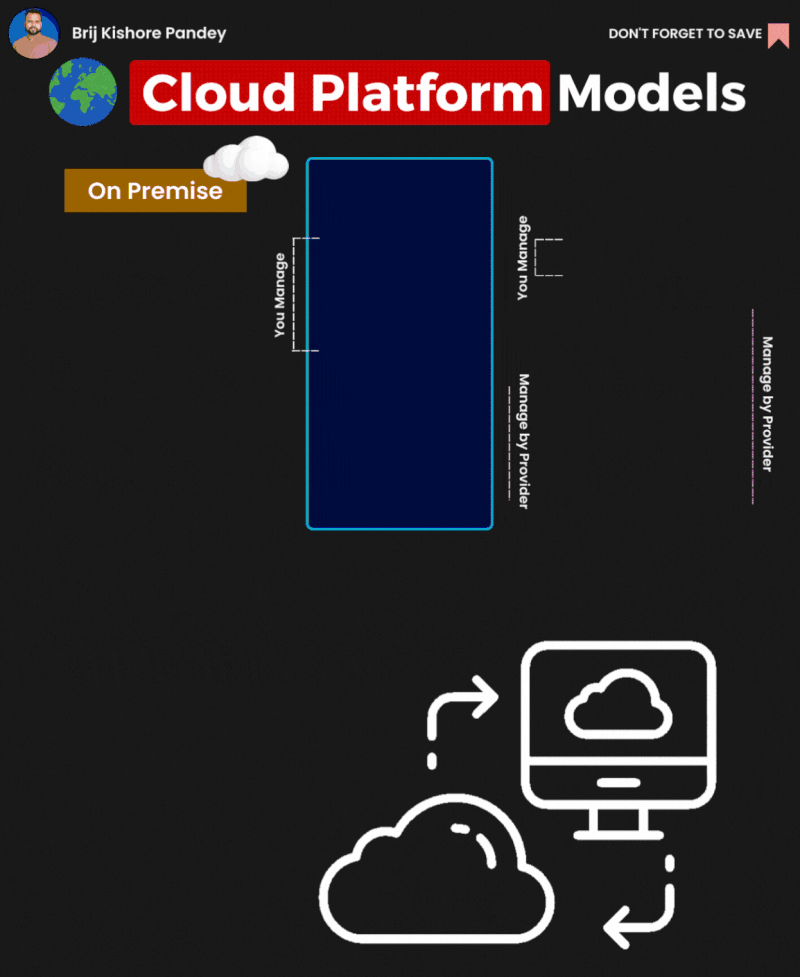Cloud platform models, including on-premises, Infrastructure as a Service (IaaS), Platform as a Service (PaaS), and Software as a Service (SaaS), represent varying degrees of infrastructure management and service abstraction. On-premises entails complete ownership and management of hardware and software within an organization’s data centers. IaaS offers a more flexible model, where organizations can rent virtualized infrastructure resources, providing control over the operating system and applications. PaaS takes abstraction a step further, abstracting the infrastructure layer entirely and enabling developers to focus solely on building and deploying applications. SaaS delivers fully managed applications accessible over the internet, eliminating the need for software maintenance and infrastructure management. Each model has its unique advantages and trade-offs, making it essential for organizations to align their cloud strategy with their specific needs and objectives, considering factors like control, scalability, and operational overhead.
Let’s break down the distinctions between On-Premise, IaaS, PaaS, and SaaS to help you make an informed decision for your business needs.
1️. 𝗢𝗻-𝗣𝗿𝗲𝗺𝗶𝘀𝗲:
- All hardware and software are housed within an organization’s premises.
- All hardware and software are housed within an organization’s premises.
- Higher upfront costs and maintenance responsibilities.
2️. 𝗣𝗹𝗮𝘁𝗳𝗼𝗿𝗺 𝗮𝘀 𝗮 𝗦𝗲𝗿𝘃𝗶𝗰𝗲 (𝗣𝗮𝗮𝗦):
- Provides a platform allowing customers to develop, run, and manage applications.
- No need to manage infrastructure.
- Streamlines the development process.
-Examples: Google App Engine, Heroku.
3. 𝗜𝗻𝗳𝗿𝗮𝘀𝘁𝗿𝘂𝗰𝘁𝘂𝗿𝗲 𝗮𝘀 𝗮 𝗦𝗲𝗿𝘃𝗶𝗰𝗲 (𝗜𝗮𝗮𝗦):
- Virtualized physical computing resources over the Internet.
- Offers servers, storage, and networking technology.
- Offers servers, storage, and networking technology.
– Examples: Amazon Web Services (AWS), Microsoft Azure.
4️. 𝗦𝗼𝗳𝘁𝘄𝗮𝗿𝗲 𝗮𝘀 𝗮 𝗦𝗲𝗿𝘃𝗶𝗰𝗲 (𝗦𝗮𝗮𝗦):
- Delivers software applications over the Internet.
- Subscription-based model.
- No hardware or software installation and maintenance.
– Examples: Salesforce, Google Workspace, Microsoft 365.
𝗞𝗲𝘆 𝗖𝗼𝗻𝘀𝗶𝗱𝗲𝗿𝗮𝘁𝗶𝗼𝗻𝘀:
- Evaluate your organization’s specific needs, budget, and technical expertise.
- Consider security, compliance, and data handling.
- Analyze scalability, flexibility, and future growth.
In conclusion, each model offers unique advantages and limitations.
The right choice depends on your organization’s goals, resources, and technical capacity.
Embrace the cloud and propel your business to new heights!







